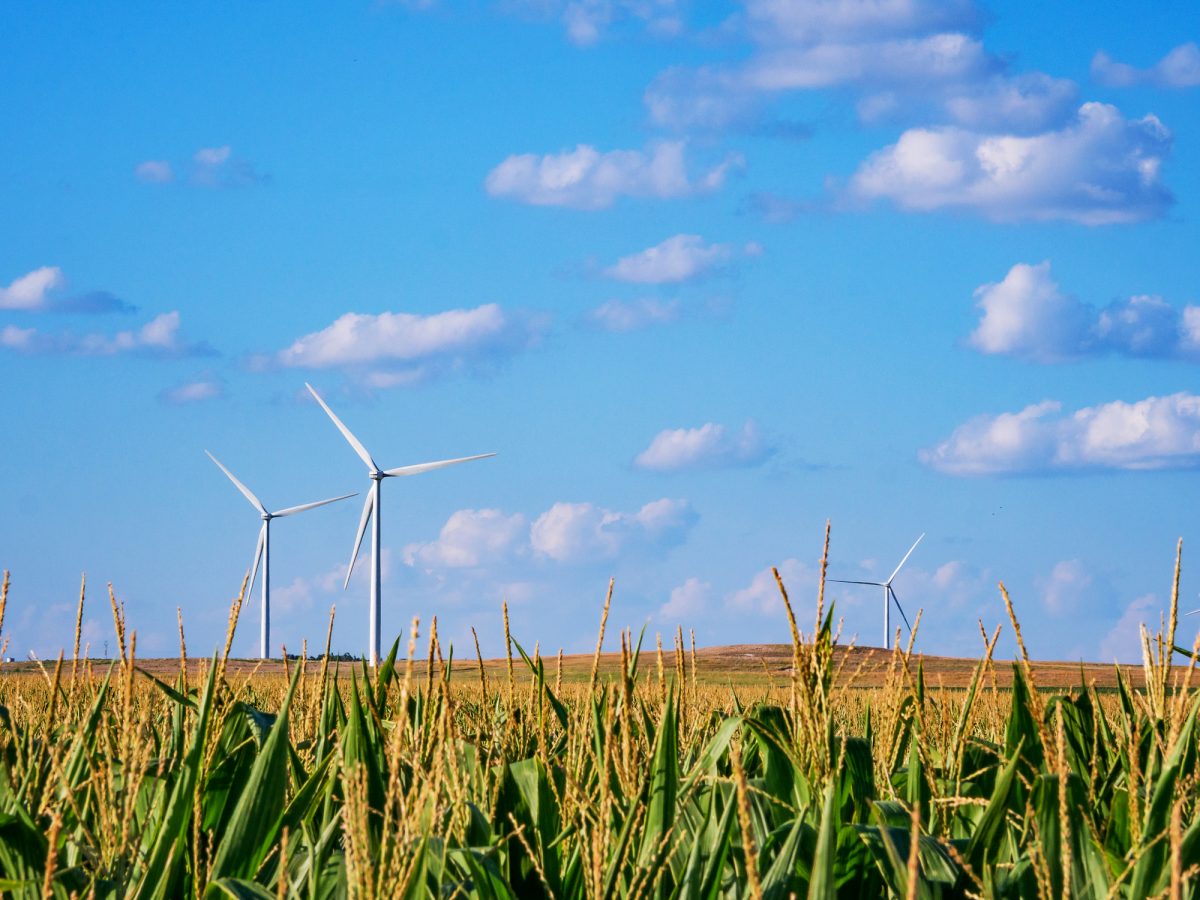
Kansas (shown here) and other Great Plains states have installed many more wind farms than the Midwest. A new study shows that different ownership structures of rural undeveloped land help explain this. Credit: Sturockstar|Dreamstime.com.
The United States and many other countries have announced net-zero emission goals by 2050. For the energy sector, which accounts for three-quarters of global carbon emissions, reaching that goal likely requires a substantial expansion of onshore wind farms. But one important question has not been widely discussed yet: Do we have enough land to build them?
This question is a perfect fit for AAE professor Dominic Parker’s longstanding interest in land use and property rights. To answer it, Parker teamed up with Justin Winikoff (AAE PhD’20), a research economist at the U.S. Department of Agriculture with expertise in wind energy.
The vast majority of U.S. wind farms have been built across privately owned, undeveloped rural land without major obstacles, such as airports, roads and other public infrastructure. Wind developers have bargained with neighboring landowners to lease areas large enough for commercial wind farming, typically at least 5,000 acres. But this is more difficult when individual landholdings are small and leases across many neighboring tracts are necessary. For example, 53% of rural tracts in Wisconsin but only 35% in Iowa are smaller than 100 acres—a plausible reason for Wisconsin lagging behind Iowa in wind energy development.
In their recent study, Parker and Winikoff examined whether the size of rural landholdings has indeed affected the location and size of wind farms. They analyzed a dataset of more than 70,000 wind turbines installed over the course of 20 years through December 2021.
The researchers tested their hypothesis at three spatial scales, starting with 2,500 counties in the continental U.S. with more than 10% of farm-occupied land. Higher-resolution analyses included 98,000 undeveloped square-mile sections in 185 windy counties from 13 states and more than 334,000 parcels in these counties that are large enough to fit a turbine. At each spatial scale, the researchers correlated the number of separate owners—a measure of land fragmentation—with the number of turbines.
All three analyses revealed a clear preference of developers for areas with few owners of large contiguous tracts of land. In other words, areas with more land fragmentation had less installed wind capacity after accounting for other relevant factors, such as windiness and access to power transmission lines. The different ownership structures explained why many more wind farms have been built in the Great Plains than the Midwest.
The observed relationship between landholdings and wind farms illustrates an economic concept called the tragedy of the anticommons. “This ‘tragedy’ occurs when all landowners could benefit, but development fails because there is no coordinated decision-making process,” explains Parker. “This is more likely as the number of neighboring owners needed in a project grows.”
The failure to coordinate means wasted opportunities for owners to earn income from leasing their land to developers. That income can be substantial, with a range of $7,000 to $14,000 of annual per-turbine payments reported in 2018.
The researchers drew three conclusions from their study. “First, our findings show that the low-hanging fruit of wind farm development has already been picked and that future development will face more obstacles,” says Parker. Wind energy projections tend to prioritize areas where development is less costly and more productive based on windiness and transmission lines. But these predictions may be overly optimistic because they don’t account for land ownership structure.
Second, areas with more existing transmission lines

turned out to have smaller average landholdings. This means that budgets to expand wind energy need to account for the cost of building new transmission lines in areas where owners are more willing to lease their land. Funds to help coordinate landowner decisions should be another priority.
For example, these funds could support landowner organizations that share information about income opportunities from wind farms and build consensus on proposed leases. This coordination may be especially important for lower-income landowners with small holdings. They have benefitted less from government subsidies to date, given the preference of developers to approach wealthier landowners with large holdings.
Third, efforts to expand wind energy may need to adjust their targets. “It has been difficult in the past to build wind farms on public land owned by federal, state and local governments,” says Parker. “But with about one-third of the country in this category, significant expansion will require development on public land and a greater emphasis on offshore wind, where property rights play a smaller role.”